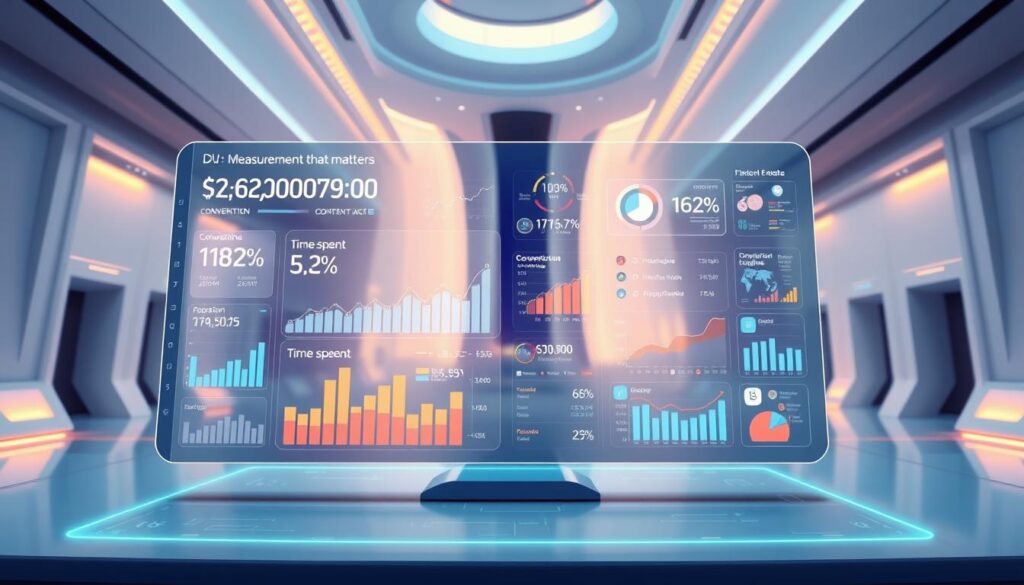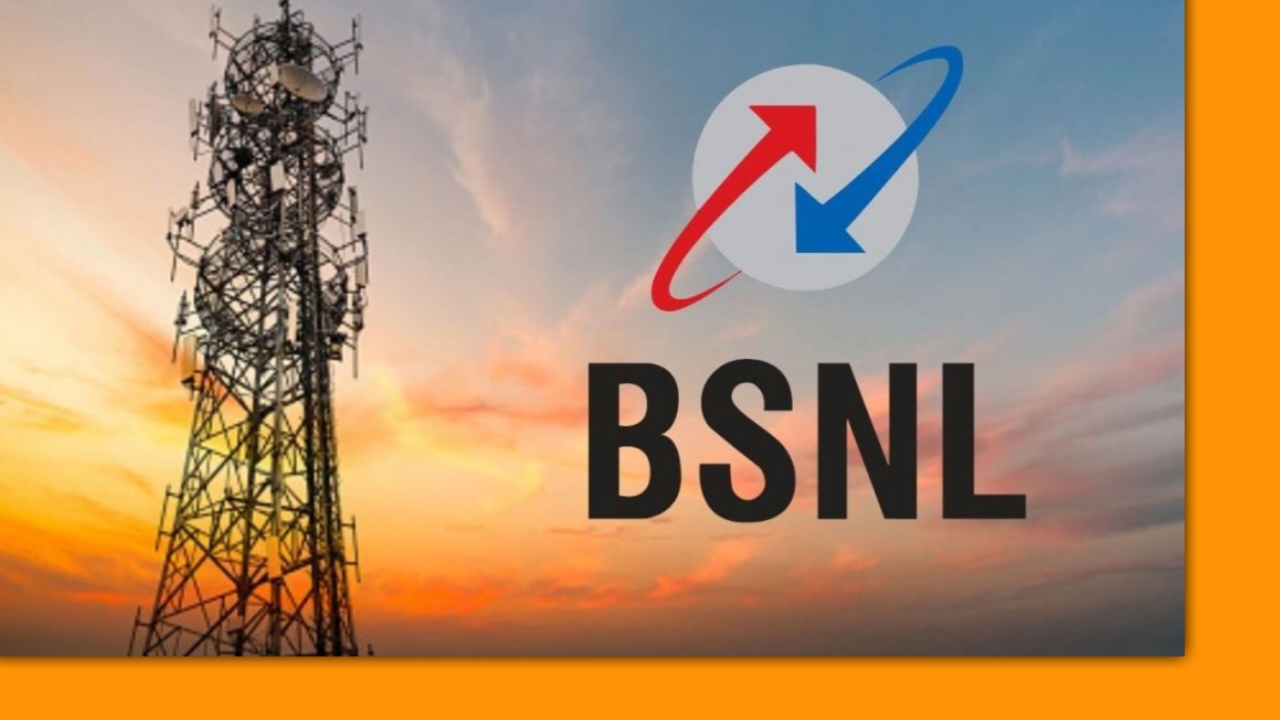Staggering fact: the global immersive marketing market hit $6.90B in 2024, and 71% of brands saw positive ROI that year.
You’re entering a decade where people want to explore, not scroll. Avatar-led worlds are turning content into active experiences that drive real business results.
We’ll show how your brand can use avatar-driven environments to lift conversions, create stickier experiences, and build community momentum. Expect practical steps on design, storytelling, gamification, and measurement that map directly to your goals.
Want data and case studies that prove this shift? See why Gucci’s Roblox launch drew millions and why product demos now lift conversions by double digits via immersive formats at this analysis of metaverse social media.
Key Takeaways
- Avatar-first worlds turn passive scrolling into active brand experiences.
- Smart marketing now ties environment design to measurable conversion lift.
- Small teams can start with low-cost production and clear KPIs.
- Focus on engagement depth, sentiment, and conversion—not just reach.
- Early adoption creates fast opportunities for lasting success by 2030.
Why the Feed Is Fading and Virtual Worlds Are Rising
People now trade endless scrolling for spaces where they can act and belong. That shift matters because attention is the new currency. Long-form, interactive formats hold attention and deepen connection.
Data point: 68% of attendees in immersive experiences report stronger emotional ties to brands. Platforms like Facebook and YouTube support 360-degree content, while Instagram enables interactive formats via Stories and Live.
From passive scrolling to active participation
Consumers are moving from passive consumption to active participation. They want choice, exploration, and agency in their experiences. Avatar-driven worlds answer that demand.
How avatar-driven environments reshape attention and purchase paths
- Longer attention: Users control the viewpoint and actions, so engagement and recall improve.
- Compressed purchase paths: Try-ons and in-world demos let customers visualize and buy without leaving the environment.
- Stronger signals: Interaction time, completed scenes, and sharing become better metrics than clicks.
- Identity-driven promotion: Avatars let people display brand affiliations, influencing peers organically.
Brands that act now move from interruptive ads to helpful guides. As platforms elevate interactive content, traditional feeds will feel stale by comparison.
Immersive social media: the foundations brands must master

Brands that win in the next five years design places people want to step into, not just glance at. To build those places, you need clear definitions and a focused plan.
Defining the formats and how they differ
AR overlays virtual elements onto the real world via smartphones and glasses, useful for product visualization, wayfinding, and packaging enhancement.
VR creates fully controlled environments for storytelling and demos. Škoda and Ford report ~30% higher engagement and a 20% shorter sales cycle from VR simulators.
MR blends both layers. Spatial media enables shared, location-based encounters. Choose the right technology to match your audience and goal.
Presence, narrative transportation, and emotional connection
Use presence and strong storytelling to move customers from observing to feeling. That shift boosts recall and purchase intent.
Design clear participant roles and reactive feedback. These choices create meaningful connection and keep people engaged long enough to act.
Commercial intent in 2025: align goals to behavior
- Pick one strategy: awareness, education, conversion, or loyalty.
- Map behaviors to outcomes: AR try-ons for confidence, VR worlds for deep stories, spatial formats for shared moments.
- Plan conversion moments inside the experience—immersive demos have delivered a 22% conversion lift and 71% of brands report positive ROI.
The tech stack for 2030: AR, VR, AI, and 360-degree content on leading platforms
![]()
The modern stack mixes camera-first AR, controlled virtual reality rooms, smart AI, and spherical content to lift engagement. Each layer solves a different need for brands and users.
Augmented reality for product visualization
Use AR for accessible product demos, try-ons, and on-pack effects that work on phones. IKEA’s AR app shows how furniture fits at home and lowers return rates.
Virtual reality for storytelling
Use virtual reality to stage fully controlled brand environments. VR simulators from Škoda and Ford boosted engagement by 30% and cut sales cycles by 20%.
AI personalization and 360-degree publishing
AI adapts scenes, offers, and guidance in real time. Publish 360 content natively on Facebook and YouTube, then repurpose for Instagram Stories and Live to reach more viewers.
| Layer | Best use | Key benefit | Platform notes |
|---|---|---|---|
| AR | Try-ons, product visualization | Faster confidence and fewer returns | Smartphone-first; web AR options |
| VR | Branded rooms, demos | Higher engagement; shorter cycles | Requires headsets or apps |
| 360 video | Tours, events | Broad reach; rich context | Facebook and YouTube native support |
- Optimize capture with stabilization and spatial audio.
- Integrate telemetry to track gaze, hotspots, and time in scene.
- Start with light prototypes like web AR try-ons before larger builds.
Designing avatar-first experiences that users want to explore
![]()
To hold attention, you must design paths that invite curiosity and reward action.
Storytelling patterns that create memorable, shareable brand worlds
Tell short, stageable stories. Use acts a user can enter: arrival, choice, reveal, and reward. This simple quest flow helps users understand purpose fast.
Make moments that are easy to recap. Snapshots, highlight reels, and small victories create shareable proof points that spread reach and trust.
Environment design, interaction cues, and multisensory elements that drive engagement
Build environments with clear landmarks and purposeful paths. Give avatars roles that match your brand goals—host, creator, or collector.
- Define a quest structure: arrive, explore, unlock, share.
- Guide with subtle cues: glows, arrows, and sound hints to nudge interaction without breaking immersion.
- Layer spatial audio and gentle haptic prompts as devices allow to deepen presence.
- Offer customization that reflects your brand and lets the audience express identity.
Keep controls simple. Tooltips and micro-tutorials should onboard a user in seconds.
Design for repeat visits. Close each session with a shareable moment to create memorable experiences and amplify organic marketing.
Your go-to-market playbook for immersive campaigns
![]()
A repeatable go-to-market playbook lets brands turn experiments into steady results. Start small, test quickly, and make each campaign teachable.
Utilize user-generated content to build trust
Launch UGC challenges with a clear hashtag, simple rules, and rewards like discounts or early access. Repost creator content and credit authors to boost trust.
Gamification mechanics that drive action
Add points, badges, leaderboards, quests, and unlockable goods. Progress bars and small rewards push users to complete tasks and share wins.
Collaborate with influencers and partners
Brief creators to co-create scenes, not just endorse. Give them content packs and brand-safe effects so their posts convert followers into participants.
Early access and visual marketing tactics
Offer previews to a select audience to gather feedback and seed proof. Use high-res assets, AR filters, live formats, and platform specs to make content pop.
| Tactic | Why it works | Key metric | Quick tip |
|---|---|---|---|
| UGC contests | Builds trust and reach | Hashtag mentions | Offer clear repost rules |
| Gamification | Increases completion | Engagement time | Keep rewards meaningful |
| Creator partnerships | Extends credibility | Conversion rate | Co-create scenes |
| Early access | Generates buzz | Sign-ups & feedback | Share results publicly |
Outline a simple strategy that maps channels to roles—teasers, education, conversion—so every touch has a job. Track what resonates, scale winners, and retire what fails to deliver trust or completion. That cycle drives long-term success for your campaigns and customers.
Measurement that matters: engagement depth, conversion lift, and ROI

Measure what people do inside your world, not just what they click. Start with a balanced scorecard that mixes depth and reach. That gives you a single view of performance you can act on.
Tracking interaction time, completion rates, and social amplification
Track core metrics: engagement rate, time spent, completion rates, and social interactions. Tag events for views, taps, saves, unlocks, and shares so attribution reflects real choices.
Business impact: conversion rate improvements, brand recall, and purchase intent
Tie outcomes to clear business signals. Link in-experience CTAs, promo codes, and saved items to conversions. Use pre/post surveys to capture brand recall and intent that raw data misses.
“Depth metrics beat vanity metrics when you need to prove ROI and guide product changes.”
Instrumentation: event tagging, spatial analytics, and survey-based sentiment
Instrument telemetry to capture gaze, hotspot activity, and where users stall. Combine that spatial analytics data with CTR, bounce rate, acquisition cost, and ROI for a full picture.
- Define success with a balanced scorecard blending time spent, interactions, completions, and reach.
- Tag events for core actions so you can trace behavior inside the experience.
- Use spatial analytics to see what drives interaction and where users drop off.
- Run pre/post surveys for recall, intent lift, and sentiment you can’t infer from clicks.
- Segment by device and audiences to optimize accessibility and performance.
| KPI | What it shows | How to track |
|---|---|---|
| Engagement rate | Depth of attention | Time spent + interactions / sessions |
| Conversion rate | Revenue impact | In-experience CTAs, promo code redemptions |
| Time spent | Session quality | Telemetry and session logs |
| Sentiment | Emotional response | Surveys and sentiment analysis |
| Spatial hotspots | Design effectiveness | Gaze tracking and event heatmaps |
Report plainly. Translate metrics into short recommendations so product, marketing, and leadership can act fast. That habit turns experiments into repeatable wins for your brand and marketing teams.
Use cases and case studies you can replicate today
![]()
Concrete use cases prove small pilots can unlock big returns fast. Below are three replicable paths you can start this quarter.
Retail and furniture: try-before-you-buy
Replicate IKEA’s approach with a web AR scene that places your product at true scale in a shopper’s room.
Why it works: IKEA’s AR app helps customers visualize furniture at home, boosting confidence and cutting returns.
Fashion and brand worlds
Create a branded world on platforms like Roblox and sell collectible digital goods.
Gucci Garden drew 4.5M users in week one and 20M in month one, earning $1.2M+ in virtual item sales. That proves product drops can become revenue drivers.
Travel and tourism: virtual tours and live 360
Offer 360-degree tours and live streams to help customers visualize destinations and book with confidence.
Facebook and YouTube support 360 live and VOD. Use these channels to spark urgency and social sharing.
- Start small: one flagship scene, one measurable CTA—save, claim, or book.
- Measure success: track saves, bookings, and replay rates to expand what works.
- Scale smart: add product variations and UGC-driven content based on demand.
Overcoming hurdles: accessibility, ethics, and operational challenges
![]()
Practical hurdles stand between great concepts and reliable delivery. You can clear them with a phased approach, smart tools, and clear policies. This short section shows how to reduce friction and keep users at the center.
Reduce technical barriers with a phased approach
Start small. Pilot one scene, gather feedback, then scale to more environments. Use no-code and low-code platforms to speed builds and cut costs.
Reusable templates for onboarding and navigation make operations predictable. Partnerships with platform vendors reduce technical risk.
Design for accessibility across devices
Prioritize web-based AR and device-agnostic support so more users can join. Offer alternative paths like video walkthroughs, captions, and simplified modes.
Test across connection speeds and input types to ensure fair access for all audiences.
Ethics and trust: transparency, consent, and safety
Build trust with clear consent flows and privacy-by-design. Be transparent about data and personalization.
- Set community standards and moderation tools to protect users while encouraging expression.
- Establish content and data policies with legal and support teams before launch.
- Measure inclusion and satisfaction, then act on feedback to improve fairness.
Conclusion
By 2030, avatar-driven worlds will host the bulk of meaningful online attention. This is a clear shift in power for marketing and for your brand.
Data shows higher engagement and conversion lifts when campaigns align to clear goals and are tracked with experience-specific metrics. Start small: one goal, one scene, one path to purchase.
Use AR, VR, and 360 content where they fit best. Let AI personalize offers in real time. Focus on experiences that create memorable moments and measurable outcomes—not tech for tech’s sake.
Build trust with transparent data practices and inclusive design. Integrate these touchpoints across campaigns to strengthen connection with customers. Track metrics, learn fast, and scale what works.
The potential is here; the opportunity is yours. Take the first step this week and ship your pilot.
FAQ
What does "avatar-based virtual worlds replacing the newsfeed" mean for my brand?
It means audiences will spend more time in interactive, persistent environments where they control an avatar. Brands must shift from broadcast posts to designing experiences where users explore, interact with products, and form emotional connections that drive purchase paths.
Why are feeds losing attention compared to avatar-driven environments?
Feeds promote passive scrolling. Avatar environments offer active participation, richer storytelling, and deeper presence. That combination holds attention longer and creates stronger pathways to conversion and loyalty.
What core experiences should brands master to succeed in these environments?
Focus on presence, narrative transportation, and clear interaction cues. Combine product visualization, meaningful story beats, and seamless purchase triggers so users feel engaged and confident to act.
How do AR, VR, and mixed reality differ for marketing use?
AR overlays digital content on the real world for try-ons and visualization. VR creates fully controlled brand environments for storytelling. Mixed reality blends both, letting users interact with virtual objects anchored to their real space.
What role does AI play in avatar-first campaigns?
AI personalizes content and pacing in real time, adapts environments to user behavior, and powers conversational agents that guide discovery—improving relevance and conversion without manual scaling.
Which platforms support 360-degree and spatial content today?
Leading video and platform providers like YouTube and Facebook support 360-degree video. Emerging spatial platforms and web-based AR tools enable cross-device experiences that reach both desktop and mobile users.
How can small businesses design avatar experiences on a budget?
Start with phased pilots, reusable templates, and no-code AR tools. Focus on one high-value interaction—product try-on or a mini-game—and iterate based on user feedback and performance data.
What storytelling patterns work best in avatar worlds?
Simple, goal-driven narratives with clear choices perform well. Use environments that reward exploration, show product benefits through interaction, and include social hooks to encourage sharing and UGC.
How do you measure success in these campaigns?
Track engagement depth (time spent, completion rates), conversion lift (click-to-purchase, add-to-cart), and brand metrics (recall, purchase intent). Combine event tagging, spatial analytics, and short surveys for a full picture.
Can furniture and retail brands realistically use AR today?
Yes. Brands like IKEA have shown how AR lets customers visualize products at scale. Start with high-quality 3D assets and easy measurement points like increased app usage, shorter decision cycles, and reduced returns.
How do you build trust and handle ethics in immersive environments?
Be transparent about data use, request consent for personalization, and design inclusive experiences. Provide clear privacy settings and alternative interaction paths for users with different needs.
What tactics drive early adoption and momentum for immersive campaigns?
Use influencer partnerships, gamified incentives, early access previews, and user-generated content. These tactics create FOMO, build community, and amplify reach without large ad budgets.
How should brands approach accessibility across devices?
Offer web-based AR fallbacks, simplified navigation, and alternative content like captions and audio descriptions. Test across low- and high-end devices to ensure broad access and better conversion.



